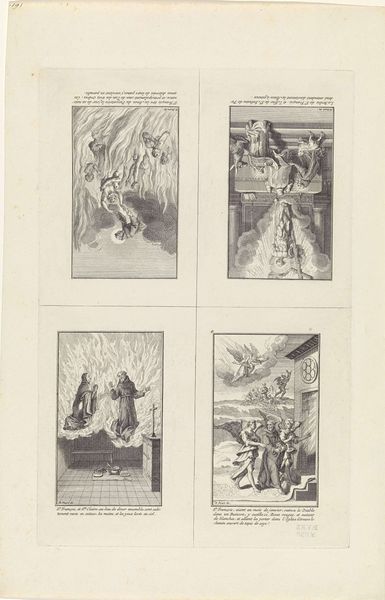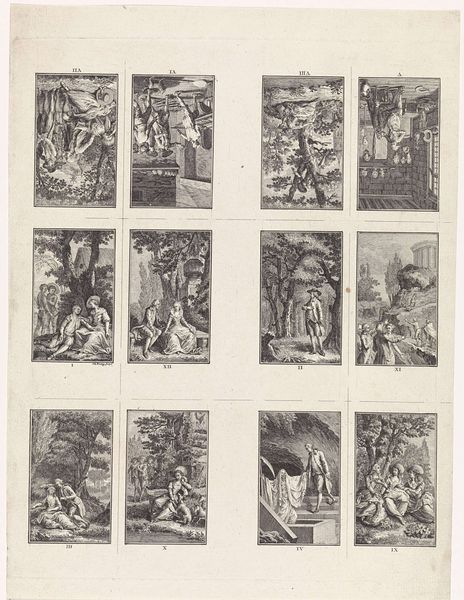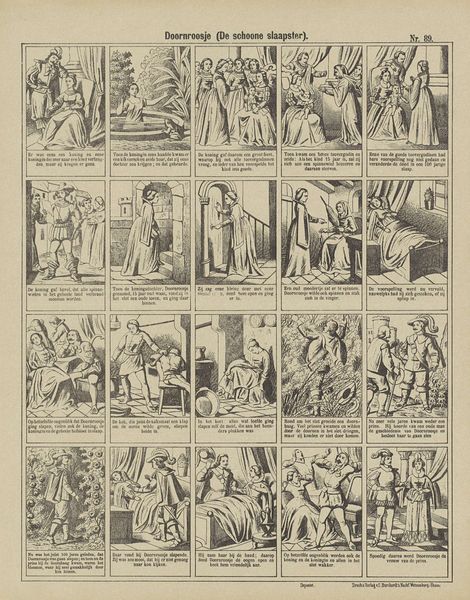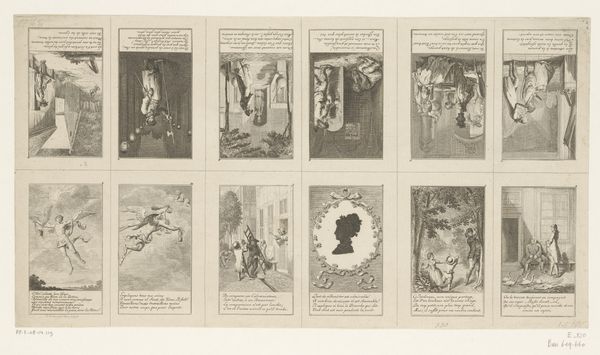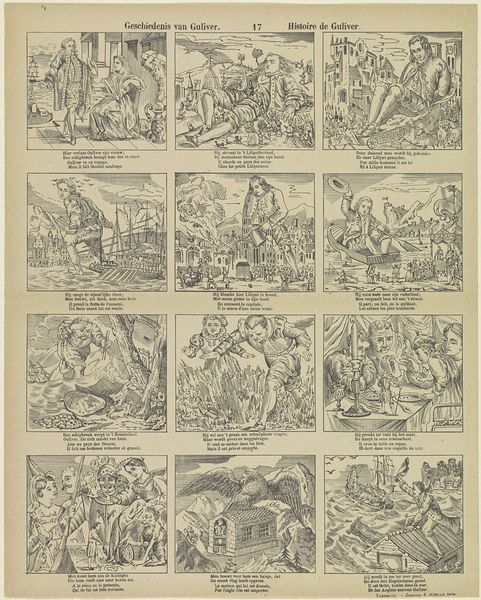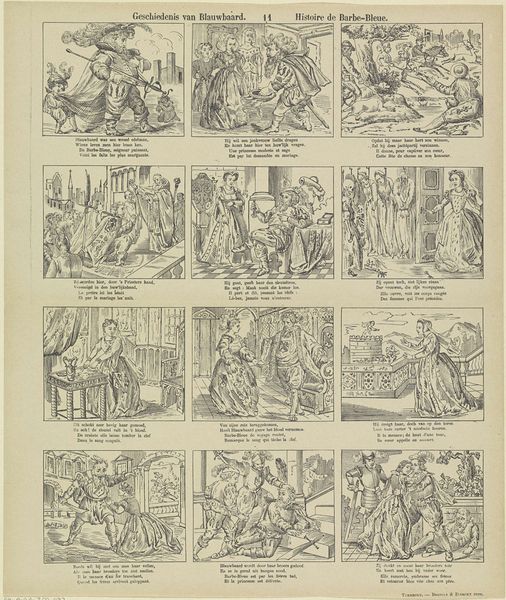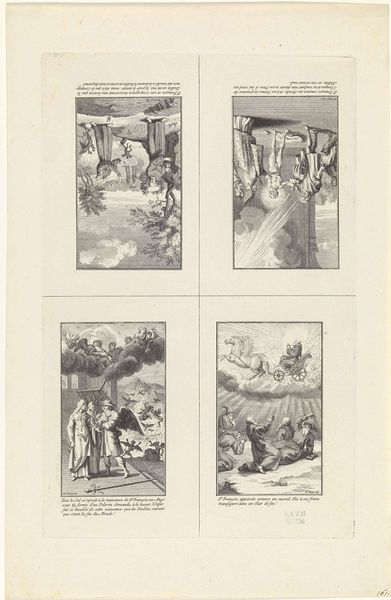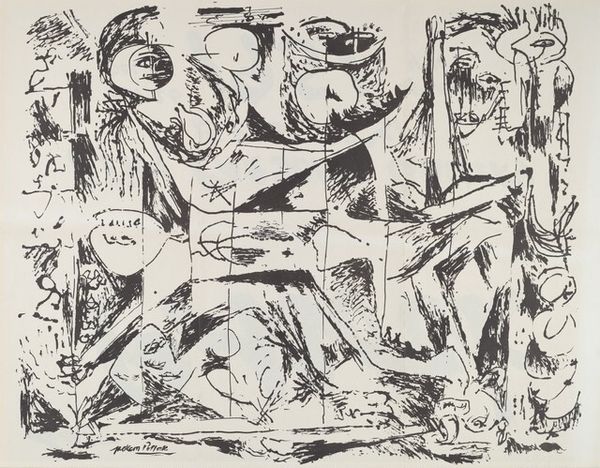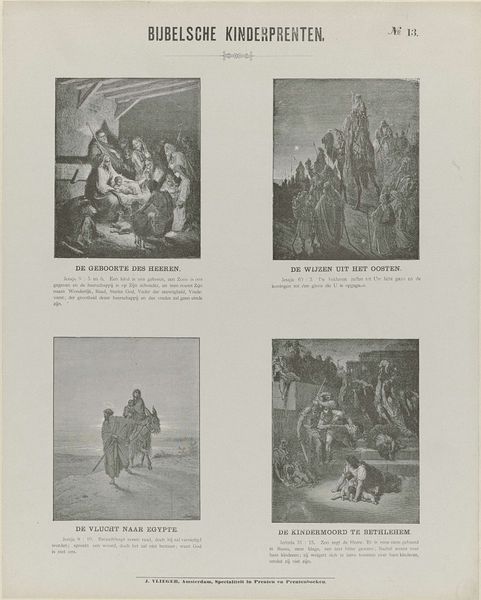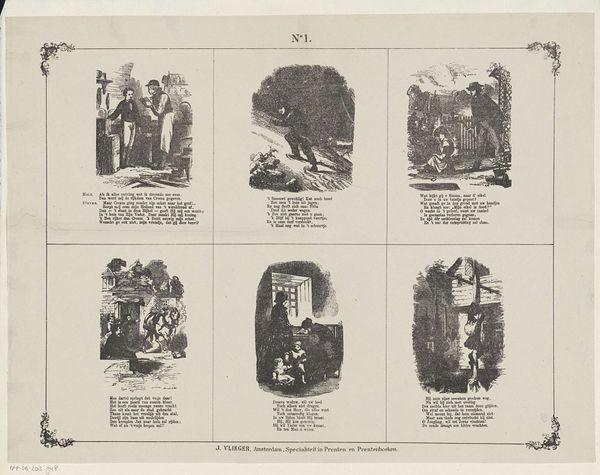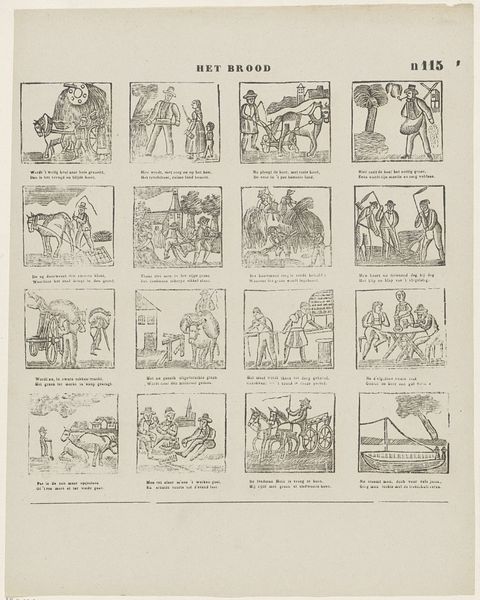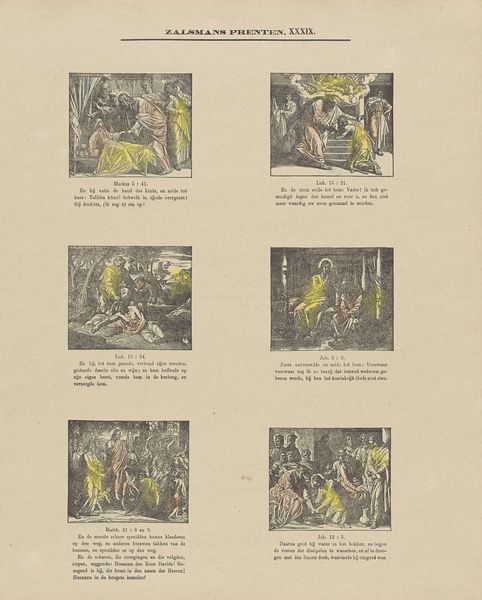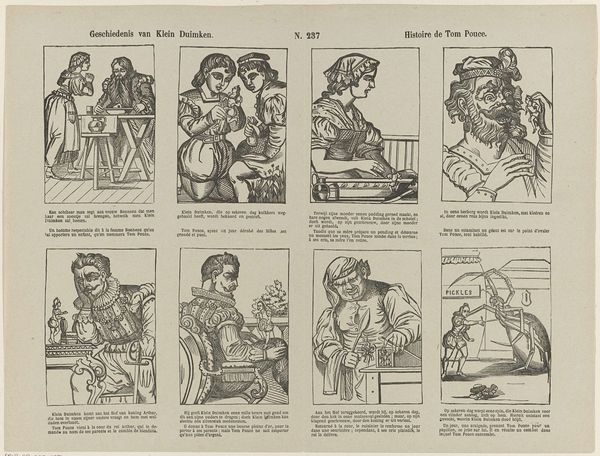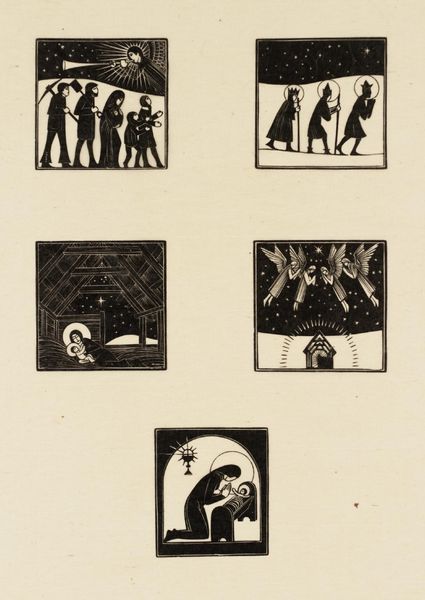
graphic-art, print
#
portrait
#
graphic-art
#
dutch-golden-age
# print
#
line
Dimensions: height 341 mm, width 423 mm
Copyright: Rijks Museum: Open Domain
Curator: Jan de Haan created this print titled “Schaduwbeelden,” sometime between 1875 and 1903. It is a lithograph, offering a series of silhouette-like images within a larger printed format. My first impression? Stark, contrasting, and deliberately evocative. Editor: It certainly evokes something...perhaps the straightforward graphic language of propaganda. The heavy black ink feels assertive, even didactic. Given it was part of a children's series, what kind of social or political narrative do you think De Haan was attempting to produce and reproduce here? The shadow puppets have an unsettling didactic edge. Curator: I'm drawn to the techniques and labor of this graphic-art medium. These images clearly suggest a printmaking background: how the artist works with line, creating sharp outlines... and this aesthetic creates accessible visual messages and widespread distribution, especially during that period. Notice that several squares showcase human sculptures that relate to famous figures in Dutch History; therefore, the print not only refers to Dutch craftsmanship, but it aims to establish a connection with the cultural narrative. Editor: Yes, I see that now. De Haan is working within well-worn symbolic frameworks—royal figures, exotic locales. A “Laplander” in their sleigh and a vaguely "Arabian" figure on horseback point towards ideas about exploration and power during the colonial period. Also, the bull and the two bears might point towards Nature and animals in a cultural narrative. Are those merely stereotypes reinforced, or is De Haan offering some kind of commentary through the symbolic weight? Curator: It’s a challenge to determine the intended impact. Mass-produced prints had such varied audiences; but analyzing its accessibility to diverse people opens up further interpretation around labor and class. In that historical context, the images were printed, distributed and consumed in diverse and layered scenarios. Also, that approach reflects an efficient means for creating and distributing visuals; the lithographic print method speaks to accessibility. Editor: Indeed. This approach of distribution and mass creation emphasizes historical symbols while questioning its narrative through craftsmanship. And the emotional impact arises from that intersection— between accessible materiality and coded representations. Curator: Absolutely, understanding both artistic production and historical impact enhances this "shadowy" viewing experience. Editor: Precisely. We both agree on the shadow puppets' approach as a method to create narratives within the cultural framework of mass production.
Comments
No comments
Be the first to comment and join the conversation on the ultimate creative platform.
